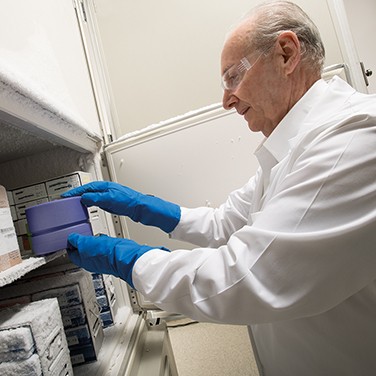Your Guide to the Cryopreservation of Cells
Cell cryopreservation puts your cell lines in suspended animation, effectively stopping biological time. While it might seem like the stuff of science fiction, cryopreservation is a meticulous and fundamental process in cell culturing that requires the utmost precision and care.
So how does cryopreservation of cells work? Let's break down the process.
Step 1: Select the Cells
Optimal cryopreservation occurs when cells are in the best possible condition and near the end of their logarithmic growth phase.
Carefully examine your cultures for signs of microbial contamination. Growing cultures for several passages in an antibiotic-free medium before testing can bring contaminants that might have gone undetected to a more detectable level.
Examine your samples under a microscope and directly culture for bacteria, yeasts, fungi, and mycoplasma. Mycoplasma presents unique issues because it goes undetected during testing. You'll also need to test culture stocks again after they've been frozen.
Step 2: Harvest the Cells
Harvest the cells using the proper procedure for the cell type — and be as gentle as possible. Once the cells are harvested, wash off or inactivate any dissociating agents that may damage the cells. For this step, use a centrifuge only if absolutely necessary and use a low force — just enough to produce a soft pellet.
Pool the contents of harvested culture vessels to ensure uniformity in the final frozen stock. Dilute or concentrate the cell suspension as needed to achieve twice the desired concentration.
Keep the cells chilled to slow cell metabolism and prevent clumping. Cells can be gassed with carbon dioxide when necessary to prevent alkaline pH shifts.
Step 3: Choose the Container
Selecting the right cryoprotective agents can minimize cell damage during cryopreservation. The right storage vessel is also critical. The wrong storage vessel creates numerous risks, including injury, damage to vessels, and contamination or loss of frozen stock.
Heat-sealable glass ampules and polypropylene screw-capped vials (with internal or external threads) are most commonly used. However, sealing issues with ampules have researchers and industry professionals increasingly preferring cryogenic vials.
Step 4: Cool the Cells
Cooling rates must be uninterrupted, slow enough to give the cells time to dehydrate, and fast enough to prevent dehydration damage. For most animal cell cultures, the ideal cooling rate is a steady drop between 1°C and 3°C per minute. Larger or less-permeable cells might need to cool more slowly because they take longer to dehydrate.
Some labs use programmable electronic cooling units, which provide precise control of the freezing process and yield uniform, reproducible results. Others use mechanical units that offer sufficient process controls at less cost. Ultracold freezers with insulated polystyrene foam boxes are one of the most economical and common methods of cooling cell lines. A Corning CoolCell container, in combination with a -80°C freezer, provides consistent and reproducible freezing profiles.
Step 5: Store the Cells
Once the cells are frozen, you need to move quickly. Use an insulated container filled with dry ice or liquid nitrogen to transfer the frozen stock to permanent storage.
Speed is the key to preventing the vials from warming and damaging the cells. Even a temporary rise in temperature can cause damage. Most cell culture labs use liquid nitrogen freezers, but the most important feature of any permanent storage location is the ability to reliably maintain temperatures below -130°C.
Step 6: Thaw the Cells
While cooling cells must be gradual, the opposite is true when thawing cells. Rapid thawing reduces the formation of damage-causing ice crystals within the cells as they rehydrate. Place your container in warm water and stir it gently until it's completely thawed. For most cell cultures, thawing for 60 to 90 seconds at 37°C achieves the best results.
Step 7: Let the Cells Recover
Remove the cryoprotective agents from the cells as quickly and gently as possible to avoid damage from prolonged exposure to these agents. The method of removing cryoprotective agents depends on the type of agent and the type of cells. Cells that are sensitive to cryoprotective agents require gentle centrifugation to remove the agent. When glycerol is the cryoprotectant, cells can be damaged by the sudden addition of a large volume of fresh medium to the thawed cell suspension. Instead, take glycerol-preserved cells through several stepwise dilutions to give the cells time to adjust. Use equal volumes of warm media every 10 minutes.
In general, most cells recover normally if the cryoprotective agent is removed within six to eight hours of thawing via medium change.
When successfully preserved, frozen cells need little maintenance and can be a lifeline if you lose cell cultures to contamination or an accident. Frozen cell cultures are especially useful for long-term experiments because their suspended animation ensures that biological variants are minimal.
Visit fishersci.com/corning to shop a variety of Corning cryopreservation products.

Cryopreservation of cells puts your cell lines in suspended animation, stopping biological time for your cell cultures.
Content provided by:
